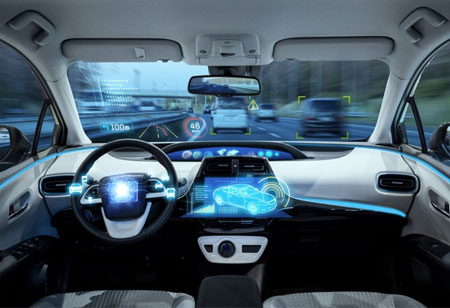FREMONT, CA – As the benefits of connected vehicles increase, their vulnerability to cyberattacks has also doubled. The threat of online hijacking serves as a significant obstacle for the worldwide implementation of connected vehicles. The manufacturers and suppliers are taking additional measures to ensure cutting-edge security in the connected vehicles to protect the users and assuage the regulators.
The autonomous vehicle industry is steadily evolving, and so are the regulatory boards. It is estimated that, by the end of the next decade, millions of connected vehicles will have hit the road. Hence, the pressure on the regulators to safeguard the users as well as the rest of the public also increases. To avoid unexpected snags, legislators are already taking action to implement security measures.
For instance, the proposed self-drive act in the U.S. House and Senate, demands written cybersecurity and privacy plans for autonomous vehicles before offering them for sale. Similar declarations have also been proposed in the European Union as well as the United Nations. It has placed an additional burden on the manufacturers since connected technology is practically hackable.
Increased connectivity widens the scope of potential cyberattacks. For example, the elaborate manual on the 2015 Jeep attack is freely available on the internet, containing instructions on remotely hacking the tire-pressure monitoring systems, infotainment system, USB, Bluetooth connection, and more. A survey by the Kaspersky antivirus firm proves that many of the apps incorporated in the connected vehicles are vulnerable to cyberattacks.
Manufacturers and suppliers of connected cars have to overcome the overwhelming odds stacked against them and develop a robust cybersecurity plan to convince the regulators of their ability to protect the drivers and passengers. To this end, the alliance of automobile manufacturers (AAM), comprising of BMW, Mercedes-Benz, Fiat Chrysler Automobiles, Ford, General Motors, Jaguar Land Rover, Mazda, Mitsubishi, Porsche, Toyota, Volkswagen, and Volvo, has designed a framework for automotive cybersecurity best practices.
The framework offers a list of general principles that the manufacturers need to follow for ensuring the incorporation security into the connected vehicle during the designing and manufacturing stages of production. It introduces risk assessment and management to locate and remediate the threats. It also advocates the collaboration with third-parties to ensure the adherence to best practices in the industry, enabling effective incident response and recovery plan.
See Also: CIO Review Insta

 Copyright © 2025 AutoTech Outlook. All Rights Reserved | Privacy Policy | Subscribe | Sitemap | About us | Feedback Policy | Editorial Policy
Copyright © 2025 AutoTech Outlook. All Rights Reserved | Privacy Policy | Subscribe | Sitemap | About us | Feedback Policy | Editorial Policy